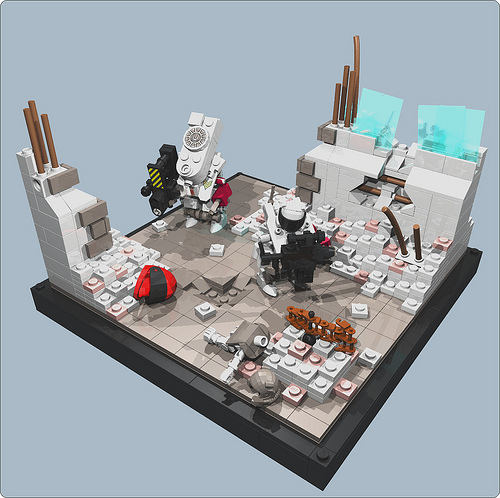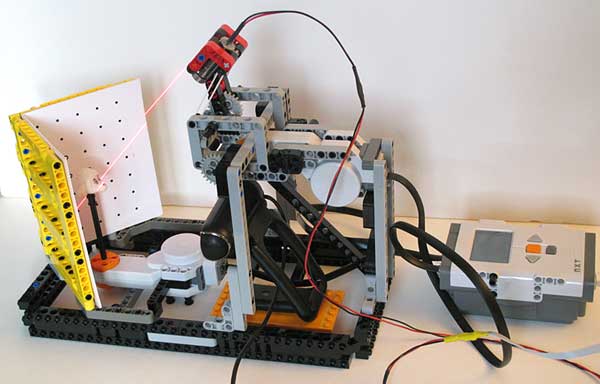
A recent discussion at LUGNET raised questions about the future of LDraw in the fan community. Oddly enough I feel I’ve seen a resurgence in LDraw work recently but of course like all of us I tend to see what I want to see so I figured I’d throw some questions out to a wider audience.
 The first question is, obviously, have you ever heard of LDraw? And if you have do you know what it is? Have you ever considered using it but decided against it? If so why? Did you know the parts are all designed by volunteers?
The first question is, obviously, have you ever heard of LDraw? And if you have do you know what it is? Have you ever considered using it but decided against it? If so why? Did you know the parts are all designed by volunteers?
To quickly give an overview it’s a CAD system and associated library designed to let you build LEGO models on your computer. It’s not the editors (those are things like MLCAD, LeoCAD and Bricksmith) or the renderers (like LDView) but the system all of these use and the parts library. Like LDD but more versatile. All the pictures in this article are recent creations designed in LDraw compatible software.
 If you are a user I’d really like to know what you use LDraw for? Do you use it to document old models? To make instructions? To make nice pictures? To make things you don’t have the bricks for? To design models you later build in bricks? Other reasons?
If you are a user I’d really like to know what you use LDraw for? Do you use it to document old models? To make instructions? To make nice pictures? To make things you don’t have the bricks for? To design models you later build in bricks? Other reasons?
 Personally I feel that LDraw has enriched my LEGO hobby immeasurably and I am constantly thankful to all the volunteers who have dedicated their time to making it such a good system. I don’t ever want to see it die a slow death and I don’t think I will. I would, however, like to know what a newer and broader audience thinks.
Personally I feel that LDraw has enriched my LEGO hobby immeasurably and I am constantly thankful to all the volunteers who have dedicated their time to making it such a good system. I don’t ever want to see it die a slow death and I don’t think I will. I would, however, like to know what a newer and broader audience thinks.
So please, comment here, on LUGNET, or on flickr. But please do comment if you are remotely interested.
Image credit to LDraw.org, Tyler Clites (legohaulic), Mike Pianta (scruffulous) and Robin Chang (GreenLead) from top to bottom
Like this article? Tell all your friends!
 While I usually don’t blog LDraw part updates, I’m making an exception for the latest one since, as far as I can tell, it’s the biggest yet, with 601 new parts on offer. In addition to an increase in the number of new parts available, the library of 12V train system parts is almost complete. Many thanks must go out to all parts authors and reviewers, especially those who’ve recently started, and to Chris Dee (the Parts Library Administrator), Phillipe Hurbain and Steffen for the huge work they’ve put in to this latest release.
While I usually don’t blog LDraw part updates, I’m making an exception for the latest one since, as far as I can tell, it’s the biggest yet, with 601 new parts on offer. In addition to an increase in the number of new parts available, the library of 12V train system parts is almost complete. Many thanks must go out to all parts authors and reviewers, especially those who’ve recently started, and to Chris Dee (the Parts Library Administrator), Phillipe Hurbain and Steffen for the huge work they’ve put in to this latest release.













